How to Create and Sell a Profitable Online Course Fast (Ultimate Guide)
Do you have an amazing course idea and looking to learn how to create and sell a successful online course?
Building an online course business with the right monetization strategies is a great way to generate passive income with your expertise as an edupreneur or online educator.
Today, you can launch your online course in less than 25 hours and create a profitable online course business.
KEY TAKEAWAYS
- Creating and selling online course is easy and anyone can start doing it.
- Key to successful create an online course is to choose the right topic or niche and get started with the right course platform.
- Structuring your online course correctly can make your course creation process easier.
Why Create and Sell Online Course?
Create and sell online course allows you to showcase your expertise to a worldwide audience. As a course creator teaching online, you gain the freedom to work remotely at the comfort of your home, or anywhere else you choose.
With the best online course creation software, it can help you get your course into the hand of millions of learners worldwide, building a online community of learners, helping them to learn a new skill and knowledge.
With more than 5 billions users surfing the web every day, you’d do yourself (and the public) a disservice by not offering an online education opportunity.
How To Create Your Online Course and Build an Online Course Business as a New Course Creator
Even as a new course creator you can easily create your own course using AI or manually. By following all the best practices, and avoid all the mistakes that other course creators make, you can find success as an course creator.
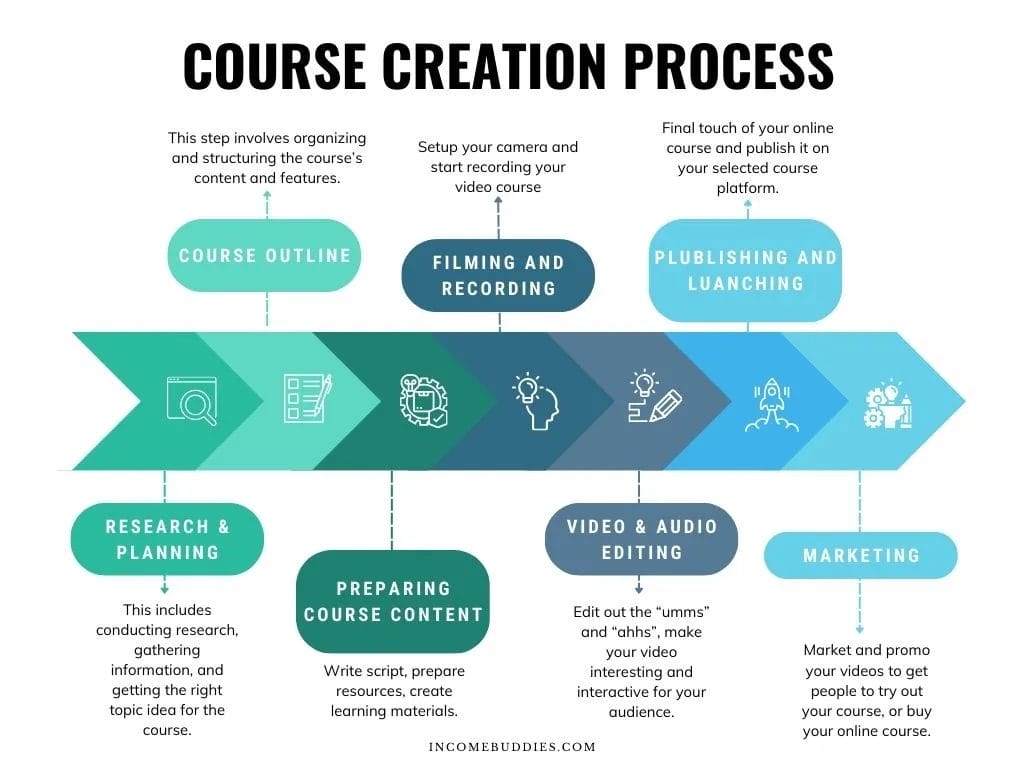
1. Deciding on Course Topic and Ideas
Your first step as an course creator is to decide what you’re going to teach. This should draw on topics and subjects which you have mastery and have deep experience in.
For instance, you’re not going to teach people how to make DIY skincare products if you’ve never made them before.
Therefore, for your online course idea, you want to think about your talents, life experience and other special skills under your belt.
- What topic are you passionate about?
- What skills are you good at?
- What unique experience do you have that you can share?
Whatever topic you select to create the course, make sure you love it and have passion toward the knowledge.
It will be painfully obvious to your students if you lack a heartfelt demeanor.
The subjects and topic are almost endless, in fact, I’ve created a complete list of +200 online course topic ideas you can choose from.
Popular Online Course Ideas
- Exercise/Movement: Pilates, Yoga, Belly Dance, Flamenco, Hip Hop, Ballet, General Exercise
- Art: Painting, Sculpting, Music, Drawing, Multimedia, Photography, Henna Tattoos
- Science: Chemistry, Biology, Botany, Physics, Geology, Astronomy, Zoology
- Math: Statistics, Probabilities, Arithmetic, Algebra, Geometry, Trigonometry
- Writing: Novels, Journalism, Basic Essays, Short Stories, Poetry, Blogs
- Languages: English, Spanish, Gaelic, French, Italian, German, Polish, Swedish and etc
- History: World, United States, European, Ancient Cultures, Middle Ages, Renaissance, Art
- Metaphysical: Tarot Cards, Astrology, Numerology, Animal Spirit Guides, Crystals
- DIY: Skincare, Home Repair, Vehicle Maintenance, Carpentry, Interior Design, Cooking, Gardening
2. Determine Market Demand For Your Online Course Idea
Once you devise a general idea of the subject you want to teach, then you have to see how much demand there is for it.
Understanding the market demand means getting onto all the social media sites you can along with making and all-points bulletin video about the course.
Gauge how the public reacts to the potential for it.
- Talk to your audience, friends, family, neighbors and other people you know about the course you want to teach.
- Observe for their reaction to it and if it’s something they take interest in.
- If at any point you notice you’re not drumming up the attention you’d like to see, you should reconfigure the topic’s premise.
However, it’s also important to note that, even though people may say they want to join your course, what they do can be an entirely different thing.
So, prepare yourself for any eventualities in this regard.
3. Selecting an Online Course Platform
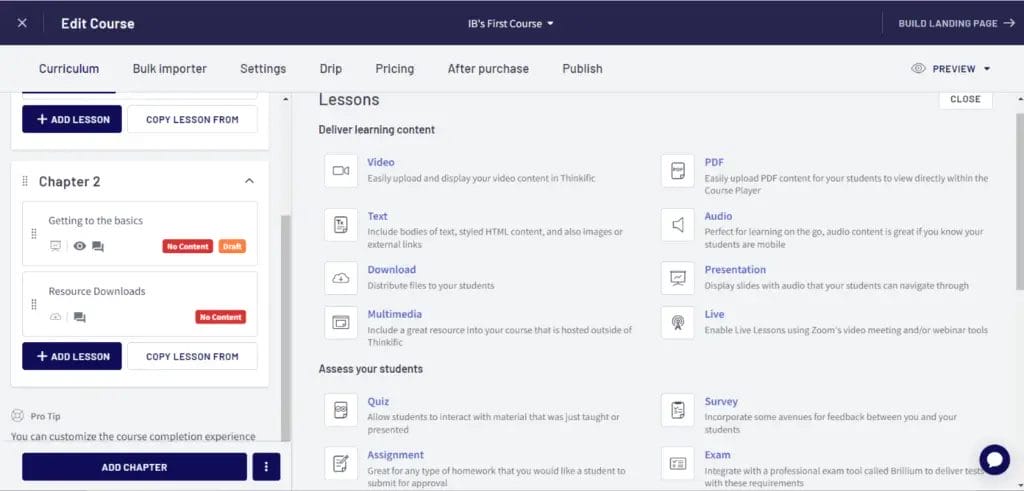
There are many great platforms to get started in providing online education. However, you want to ensure the online course platform you choose offers:
- Easy course creation process for course creator.
- Features that offers engaging and interactive learning experience for learners.
- Multiple payment processing options for your students
- Providing a means to market your course and promote your course content.
Having tried and used dozens of online course platforms for my online business, here are some of the best platforms that I’ve handpicked to help you remove burdensome guesswork:
- Handpicked online course platforms for most course creators and educators
- Free online course platforms that are budget friendly for beginners
- Course platforms for online learning schools that offers certification of completion for your learners
- Web and App-based online course platform that let you create your own iOS and Android learning App
PS. Throughout the years, I’ve done many hands-on testing on each of the platforms, at the same time as part of our research, I also do reach out to other experts in the field to get their expert feedbacks on the user experience as course creators.
I can confidently say that these platforms are tested and verified for performance.
Best of all, most of them offer free trial, making it pretty much risk free.
4. Develop Course Curriculum
You then want to develop the curriculum, staring with what’s most essential.
Don’t create individual models and courses just yet. You want to layout the curriculum in a way that you can easily see how you are going to create your course.
Your curriculum let you help you create an high level overview of what you want to create in your course.
Steps to Creating Your Course Curriculum
- Research your target audience and understand their pain point
- Choose the perfect course topic idea
- Determine course topic market demand
- Create magnetic and compelling course learning outcome
- Create course structure for your course plan
- Create your course outline and learning models
- Create course content, materials and resources
- Group lessons into sections
- Test and review the Curriculum
5. Create a Course Outline
Creating an course outline is essential. But, it’s one you should do only after discovering its demand. There’s no reason to waste your time and energy in creating an outline when no one wants to take it.
You may want to outlining your course to define your course aims and learning outcomes, course requirements, learning materials, course resources, types of assessment and criteria for completing your course.
- Think about things in a methodical and systematic way.
- Organize your course outline from the most basic and general concepts to the more detailed and complex.
- Consider what’s the most important things to learn and what’s essential in being able to execute your topic.
For instance, this may mean determining what kind of supplies students will need, creating a list of terms/definitions and basic techniques every beginner should know.
If your students are more advanced in the subject, then you want to devise an outline that will take them further in what they already know.
6. Parse Lessons into Modules/Courses
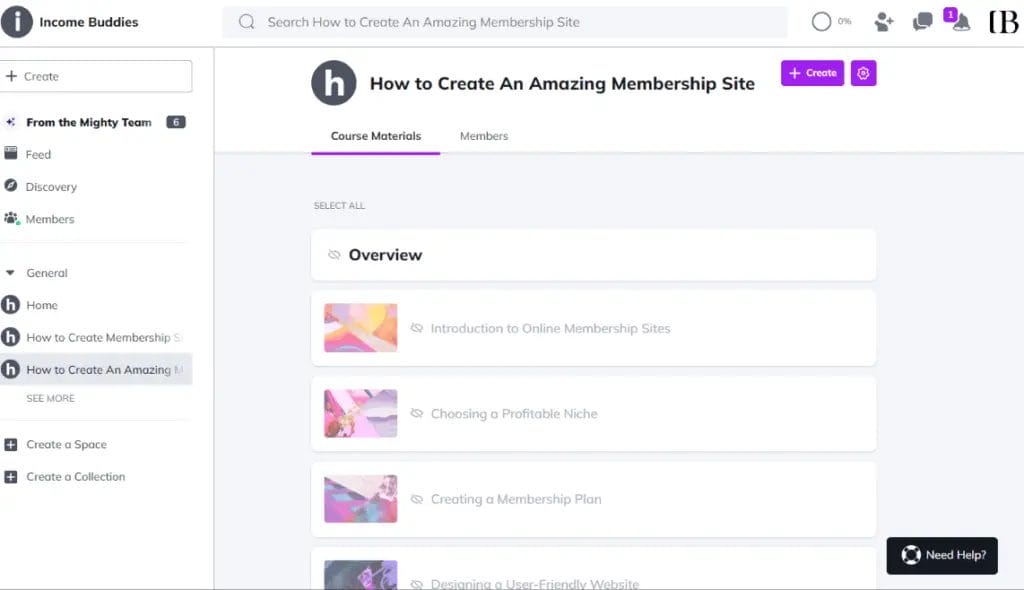
Next, you’ll want to create an overview of your course content and lessons and put it into modules and/or courses to fit the desired length of time for each class.
A module is a single component of the online course, and each module can contain a several lessons as well as activities for the course.
- Modules gives a complete picture of a certain sub-topic and it can range from 15 minutes to over an hour.
- Multiple lessons and activities make up a module or sometimes called a section, each lesson can be as short as 2 to 5 minutes.
And also, devise fun and interesting titles that will make people want to join.
For instance, you may want to have 5 lessons or classes within each of the 5 to 10 modules or courses that will be an hour each.
Always start with the easiest and most common to the more difficult and/or obscure.
Template to Parse Lessons into Modules for Courses
Here is a simple template on how the modules can be arranged:
- Start with an intro to the topic.
- Dive into the overview of the course
- Go into each of the modules of the course, from the easiest to understand to the hardest.
- Go into case-studies or other form of course presentation.
- Conduct knowledge assessment on the course.
- Provide final tips and bonus for the course
- End the course and ask for a call to action when finishing the course.
To give you a better picture of this concept, the following is a sample outline with a loose course for beginner Egyptian-style belly dancing. In this example you may want to have 10 lessons or classes within five to 10 modules or courses that will be an hour each:
Example of Parsing Lessons into Modules for Courses
To give you a better picture of this concept, the following is a sample outline with a loose course for beginner Egyptian-style belly dancing.
In this example you may want to have 10 lessons or classes within five to 10 modules or courses that will be an hour each:
- Module 1: Bare Bones Basics (1 hrs. Total)
- Lesson 1: Posture (10 minutes)
- Lesson 2: Simple Stretching and Warm Up (10 minutes)
- Lesson 3: Movement Overview (20 minutes)
- Lesson 4: Dancer’s Counting ; Time Signatures (10 minutes)
- Lesson 5: Understanding Egyptian Music (10 minutes)
- Module 2: The Art of the Shimmy
- Module 3: It’s All in the Hips Baby!
- Module 4: Arms ; Hands
- Module 5: Shoulders ; Chest
- Module 6: Traveling ; Transitions
- Module 7: Putting It Together
- Module 8: Egyptian Choreography
- Module 9: Knowledge Assessment
- Module 10: Your Dance Journey
7. Begin Creating Course Material
Once you have a handle on your coursework layout, then start creating your course content.
However, don’t create your full-fledged course yet, only create content for half of the first module as pilot course, or you can create a mini course to test the market.
Because you don’t have any students yet, it’s not advisable to make videos and lesson plans for anything beyond that.
You can always create more when you see success and your online school starts to grow.
When you start building your course focus your time in these few areas:
- Aim to create high-quality course where your learners can get massive value from your course.
- Create a high converting sales funnel, a landing page, a sales page to convert your audience into leads or students of your course.
- Craft clickable headlines and compelling course description that focus on converting your audience into your course learners
- Get feedbacks from your course and identify opportunity to improve your course.
- Update and improve on your course content and create a template which you can replicate for ease of course creation.
Videos and Audio
The best way to convey your message and expertise is through video.
- Video mitigates confusion or miscommunication by your students.
- Your student will be able to see you and your persona.
- You will be able to build trust and rapport with your student as they know they will be taught by a real expert.
So, get a good camera and microphone to do this right. Plus, you’ll want to invest in quality video editing software.
If you aren’t familiar or comfortable with talking into a camera, create a script for yourself and do a few practice runs.
Only keep and release footage with which you’re happy because poor presentation, image or audio quality will deter students from returning.
The videos must be eye catching and easy to understand.
Caption in Video
Adding in caption into your video lesson is an excellent way to keep the material fresh and unique.
Caption in video can often times can help to emphasize a certain point and capture the attention of the viewers.
Text
Depending on your course topic, sometime it may even be better to present it in a text format, such as an eBook or pdf document, which means you won’t necessarily need a video
Regardless, most of the time it is ideal for display or illustration.
Exams, Quizzes and Tests
Another component to consider is if you want to people to take some sort of examination after each lesson and/or module.
Knowledge assessment or quiz are ideal to ensure you know they grasp the material and so they can move onto more advanced levels.
While this could be in written form, you could also request a video.
Get creative, and if you are teaching about dancing moves, you can have your students submit a short video clip via email of the final choreography.
However, only do this if you plan to offer a degree or certification.
8. Pricing Your Course
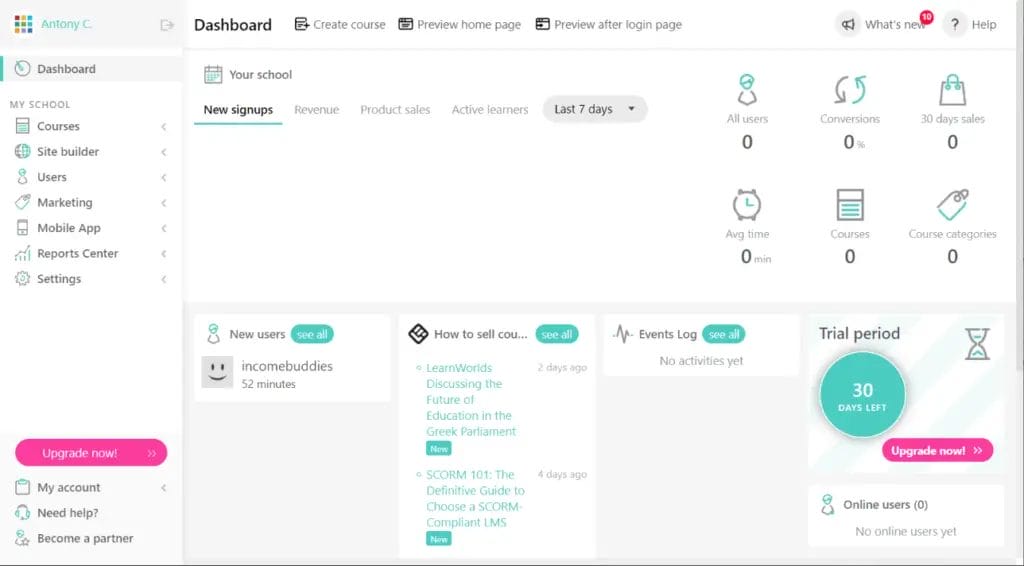
Now, think about how much to charge for the course. Pricing of your course with the use of the various monetization strategy for your course depends on many factors.
- Your talents and skills.
- Your expertise and reputation in the topic.
- Your competitors and what are they offering.
- Time it takes to create the lessons and subsequent content.
- Support you are giving to your learners after they buy your course.
Having said so, there are also other factors that can come into pay in influencing the pricing.
- Offering on-demand instant access to the materials based on the student’s own schedule.
- Offering scheduled class where you conduct your online course or class live at real-time.
Usually, you can charge a higher price for “scheduled class” where you need o conduct the class “live” virtually, however, there are exceptions where some course can charge an upwards of thousands (1,000s’) for an on-demand online course.
- Setting your price low isn’t always good.
- Setting your price high isn’t always bad.
Sometimes you’ll need to keep your prices competitive and affordable, while other times, you need to increase your price and make it unique and exclusive.
So, configuring the price will be something of a balancing act.
9. Advertise and Market Your Online Course
Creating a successful online course requires lots of marketing and advertising, however, some of the top online course platforms offers digital marketing tools, email marketing tools and sales funnel tools , which make creating a sales funnel with professional marketing beginner friendly.
The best way to get started is by marketing your online course with your own website or platform, you can even leverage the audience on social media or forum where millions of potential learners gathers.
There are many ways to market your online courses and increase sales, but the following are just some of the more popular ways to promote your course.
When starting out, get started with free advertising sites and platforms. Examples of free promotion:
- Social Media Posts
- Email Campaigns
- Networking Online; In-Person
- Community Calendars on Local Newspapers ; News Stations
- Create a Sharable Promo Video
- Partner with a Company or Organization in the Industry
You should only pay for ads and promotions when your courses grow and your sales funnel is validated to convert. Examples of paid promotion:
- Social Media Ads
- Google or search engine Ads
- Traditional Publishing Ads
- Video Ads
- Paid partnership with a Company or Organization in the Industry
- Paid advertising on blogs and websites
10. Make Yourself Easily Accessible
One of the most important things you can do to commence online teaching and classes is to make yourself as easy to access as possible.
- Make your phone number available.
- Display your email address prominently.
- Create a professional page on social media and build your online presence.
Plaster these contact information on your promo video, flyers and platform profile page.
11. Obtain Reviews and Gain Feedback
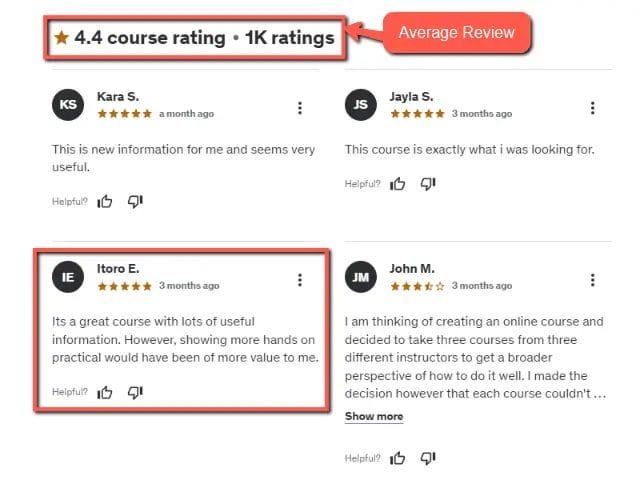
After each class, offer students a discount or some other perk for their next purchase by getting them to leave a review and feedback of their experience.
They can do this on your website, the teaching platform or social media, for example.
12. Forge a Cult Following and Online Community
Once your classes begin, grow your student base by forging a cult following. While this is easier to say than do, it’s the best way to create an elite society.
- Make this something desirable for your audience.
- Create a demand by emphasizing exclusivity.
This means managing private groups on social media sites as well as chat rooms and forums outside the online learning platform.
Give preferential treatment to longtime students and provide attainable goals for new students.
13. Establish Free Sample Classes or Courses
One of the best ways to attract new students to your classes is by offering a couple of free sample classes. But, you don’t have to do this right away.
Release a free class after you have established a cult following with a solid student base. This is the same when selling any online courses.
There are many great platform that let you create your first online course, and offer it for free.
You can use this as a lead magnet or lead generation tactic to grow your audience base, and eventually your course sales.
Benefits of Creating an Online Course
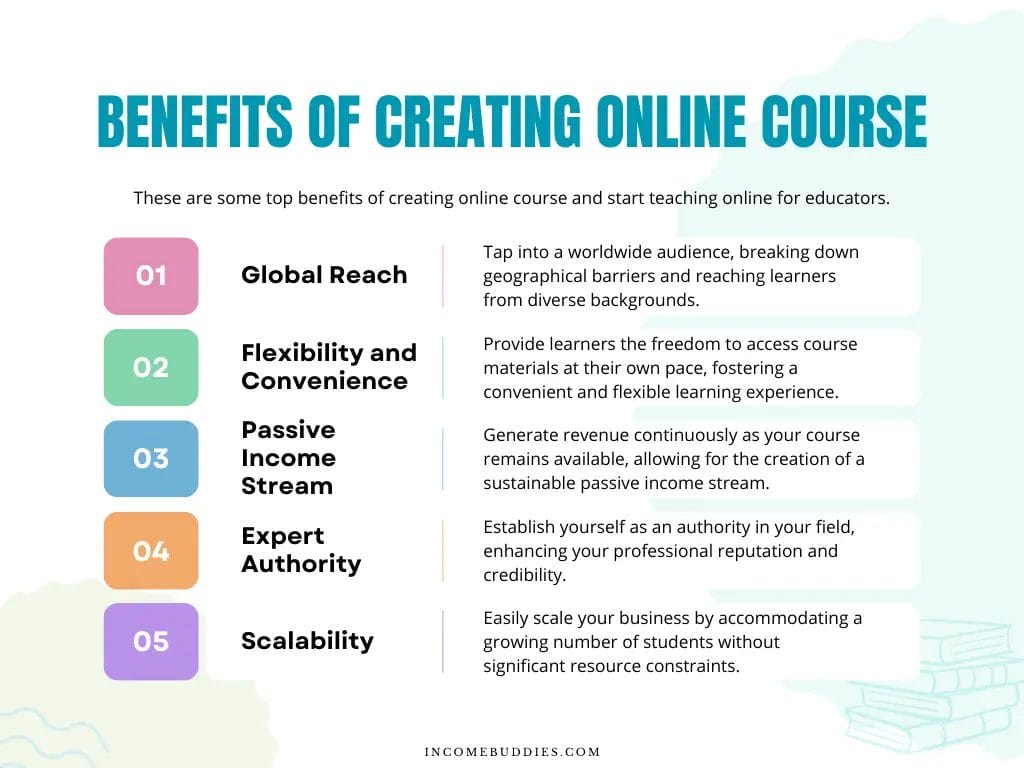
Create online courses holds significant potential for both personal and professional growth.
- You only need to create your online course once.
- You can sell your online course with unlimited sales potential.
The benefit of creating your online course vastly outweigh the time and energy for you to create your course, making it worth it to spend resources to create your online course.
1. Diversify and Increase Income
Online courses can serve as income generators, allowing you to diversify revenue streams.
As your online course sells where if you are there or not making it a great form of passive income.
Best of all, the income you can generate from your online course is not limited.
2. Establish Expertise in Your Niche
Creating your own online courses position you as an authority in your field, which elevate your credibility by sharing your expertise with a global audience.
3. Build a Tribe
Having your own online course helps you to foster a community around shared interests.
This helps you to cultivate a loyal following, creating a tribe that values your insights and teachings.
4. Monetize Existing Content
Who say you should only use new content to create your online course.
You can transform your written content into a profitable asset, monetize your knowledge, turning content you’ve already created into a sustainable income source.
5. Seize Missed Opportunities
The absence of online courses may mean missing out on valuable income and community building.
Your community maybe actively searching for an online course that can benefit them, and you are the best person to help them achieving their dreams
Embrace the opportunity to tap into a thriving market and enrich your professional journey.
Is It Easy to Create and Launch Your First Course Online?
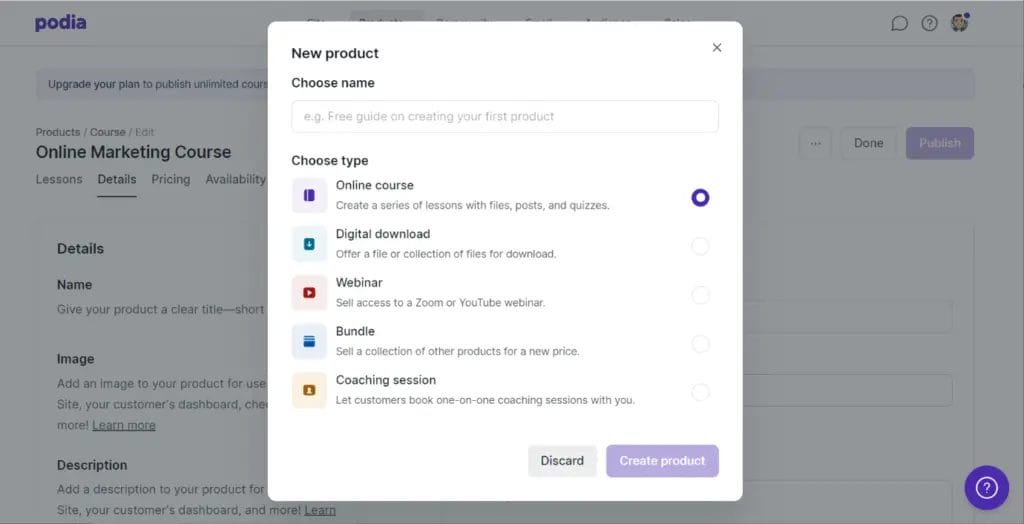
Creating online course creation is a journey that demands dedication and strategic planning, it is not easy to create an online course, but your effort and hard work will often get rewarded.
Here are some quick tips to help you through your process:
- Test Your Idea Before You Commit: Before fully committing, run a test to gauge the viability of your course.
- Be Strategic on Your Course: Break down the process into manageable tasks, ensuring a structured and effective development journey.
- Navigate Challenges: Challenges may arise, but resilience is key, embrace challenges as learning opportunities, refining your skills and approach.
The key to successful course launch is knowing when is the best time to launch your course and how to do it the most effective way.
Regardless, this is a major milestone that you should be proud of, a small step in building a profitable course business.
So are you ready to create your own online course? Here are some guide you maybe interested:
- Video Course: Creating video for online course
- Faceless Video: Create an online video course without being on camera
- AI Assisted: Leveraging AI to create your online course
- Passive Course: Creating online course for passive income stream
- Crash Course: Create a highly engaging crash course for your topic
How Long Should You Take to Make an Online Course?
Crafting an online course may take anywhere from 25 to 500 hours, however the time may vary depending on the complexity and the length of your online course.
Tailored pace your course creation process and prioritize consistency, allowing steady progress without sacrificing quality.
While, there is never a set timeline on how long do you need to take to create your online course, here is a quick guideline on the timeline.

Survey shows the following statistics:
- 24% or the majority of course creators take 2-4 weeks to create an online course
- 23% of the course creator take 1-2 months to create an online course
- 16% of the course creator take 2-3 months to create an online course
- 11% of the course creator take 1-2 weeks to create an online course
- 8% of the course creator take 3-4 months to create an online course
While 47% of course creator takes 2 to 8 weeks to create their online course, the time required for you to create your online course will highly depending on you.
So are you ready to create your own online course with the best course creator tool?
- 7 Best Teachable Alternative for Course Creators (Free and Paid)
- LearnWorlds Features: In-Depth eLearning LMS Overview
- ThinkiFic Features: Course Creator’s In-Depth Overview
- +59 Best Proven Membership Site Ideas to Get Started This Year (Read First)
- Passion.io Review 2024: Still The Best App For Coaches & Creators? (Limited Time Lifetime Deal)
Join 900+ BUDDIES who are growing their wealth with our weekly Income Newsletter
Antony C. is a dividend investor with over 15+ years of investing experience. He’s also the book author of “Start Small, Dream Big“, certified PMP® holder and founder of IncomeBuddies.com (IB). At IB, he share his personal journey and expertise on growing passive income through dividend investing and building online business. Antony has been featured in global news outlet including Yahoo Finance, Nasdaq and Non Fiction Author Association (NFAA).

